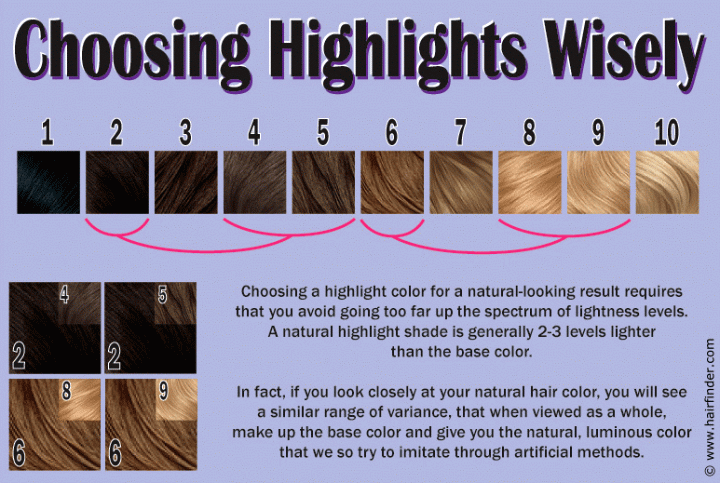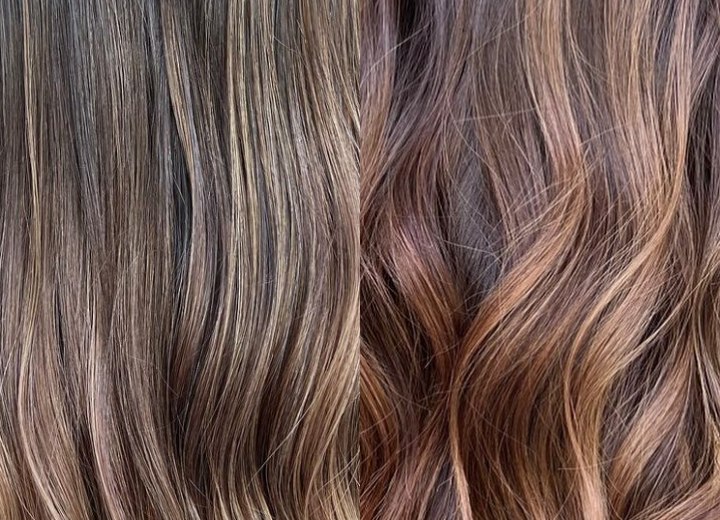How to Choose Natural-Looking Highlights (2)

Previous page
Of course, nothing is ever simple and the classification system can sometimes break down, given that the hair color industry has tried for decades to find a way to refer to certain tones of color in pleasant and more marketable ways. I’m referring to the drab/green color bases that are important and do occur naturally. I personally think that using the actual color name would be appropriate, but often people see "green" in regard to hair and it frightens them. And I believe that the term "drab" fell out of favor because it sounds dull.
Unfortunately, this means that we are left with a variety of tones of hair color that are referred to in myriad ways and we have to figure out which of them are appropriate. The "matching swatches" method helps if your hair is naturally of these shades and tones, since you can refer to the packaging of the color formula to get the terms the manufacturer uses to define the colors.
So, take your starting color that you've determined from comparing the swatches to your hair and look for colors that are two or three shades lighter. If your starting point is 5, look at levels 7 and 8 colors, if it's a 2, look at levels 4 and 5, etc. The differences won't be dramatic, but they will be effective. And most importantly, they will give you more natural-looking results.
Now that you have the levels you need, look at the shades that use the same base color as your starting color. This can get tricky, since you want to have a compatible color but you don't want to overdo it. If the color you start with and the color you want to use as a highlight both have a red base, think about how "intense" the highlight color is. Is the highlight color a brighter red than you are comfortable with?
If the tone of the color is more vibrant than your starting color, it may be that the color has more of the base color in it and could mean that the color results would be redder than you want. So keep the tone of the highlight color slightly subdued.

Now, you will also find in the mix of colors those who have "neutral" color bases. These are generally safe to use with any starting color. The place where you’ll find trouble in using neutrals is in lightening a color with a strong base so much that the base color starts showing through.
Neutrals usually won't help to lessen such results very much. But since we aren't planning to do a lot of color-lifting in these highlights, we should be pretty safe. You can read more on color conflicts and correction here.
Application Techniques:
Once we’ve found our highlighting color, the next thing to address is the way in which the highlights are applied. If you have shorter, wavy/curly hair, you can feel free to use a cap for the highlighting process. With longer hair or straight hair types, the foil method works better. Read more about foil highlighting here.
Whichever method you go with, you need to think about the balance of the overall look before you start. If your hair is really thick and full, you'll need to use thicker sections of highlights. If your hair is very curly and falls naturally into coils and ringlets, keep the ringlets in mind as you pull the hair through a cap or section it for highlighting with foils. Avoid making slices so thick that you create single color ringlets.
And of course, with straight or mildly wavy hair, you can always opt for a balayage application. Simply brush the hair smooth and paint your highlights on to the hair as you see fit. The results will be more subtle, and you generally focus on the forward edge of the hair around the face, but the effect can be flattering and can look extremely natural.
©Hairfinder.com